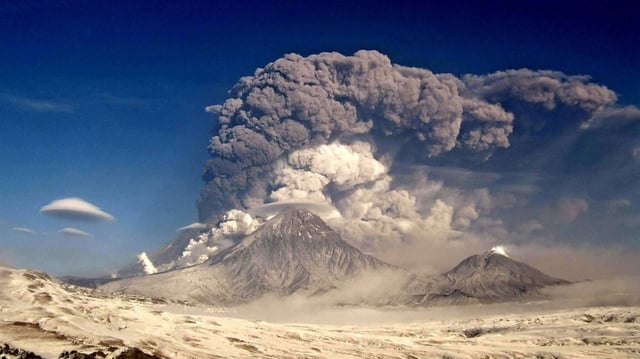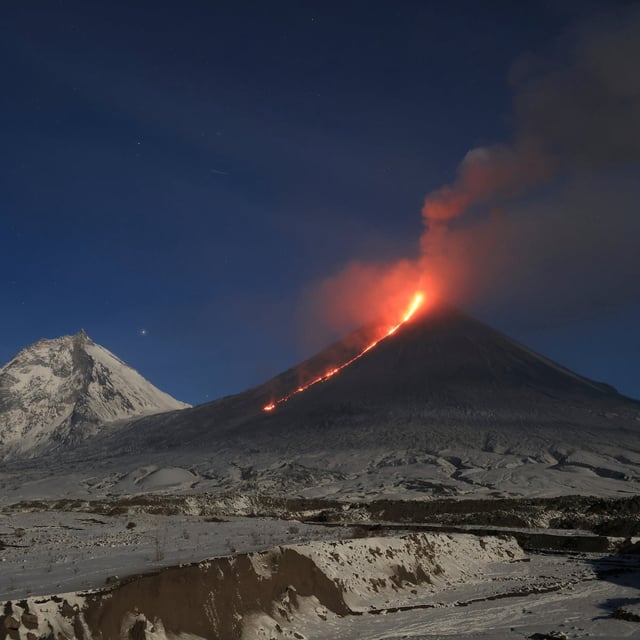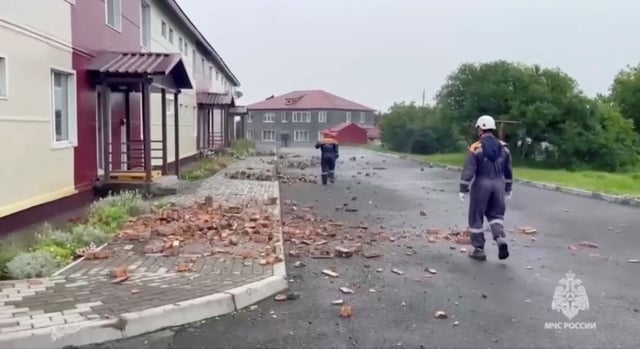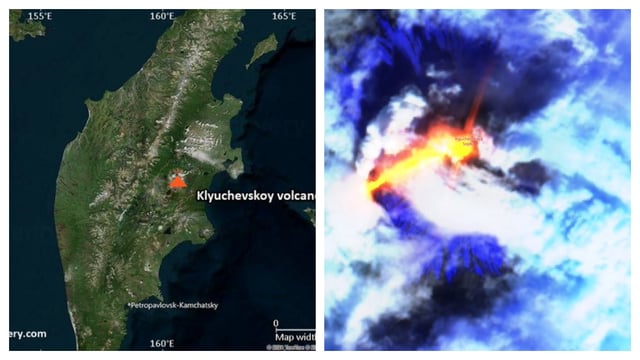Overview
- Hours after an 8.8-magnitude quake off Russia’s Pacific coast on July 30, the Klyuchevskoy volcano on the Kamchatka Peninsula began erupting.
- The Russian Academy of Sciences’ United Geophysical Service reported streams of molten lava spilling down the volcano’s western slope alongside powerful glows and explosive activity.
- Scientists had predicted the eruption for weeks after detecting increased crater lava accumulation and rising ash emissions.
- The initial tremor generated tsunami waves up to four meters high along Kamchatka’s coast, prompting evacuations in Russia and on Japan’s eastern shores.
- Kamchatka, which contains about 300 volcanoes with 29 considered active, remains on high alert as authorities track ongoing seismic and volcanic unrest.



